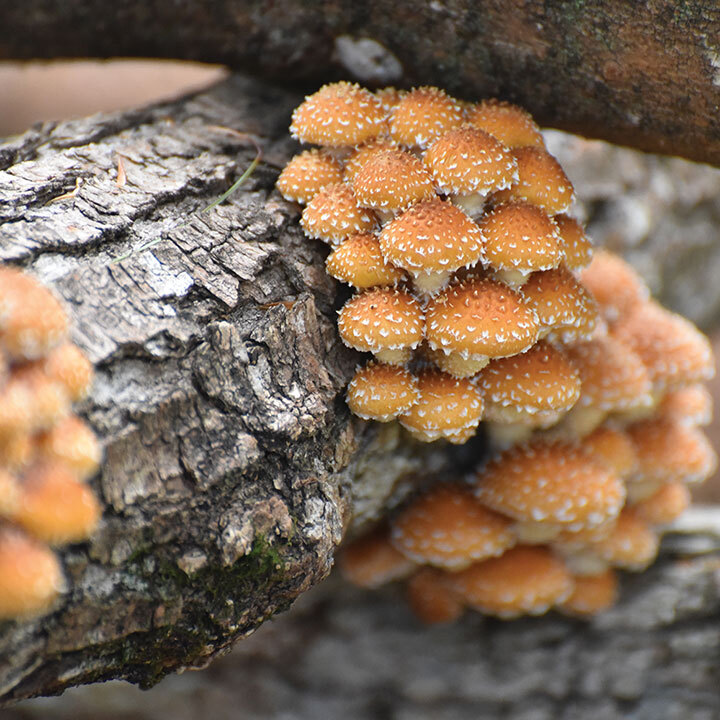
Chestnut is a beautiful late summer to fall fruiting mushroom with a nutty flavor and crunchy texture. Inoculating Chestnut logs is simple and straightforward. Maintaining and managing logs is a matter of moisture management and patience. Before you begin, please be sure you have good quality logs to make the best possible mushroom experience. Follow the five easy steps below for inoculating and managing your Chestnut logs.
1. Cut the logs (3-8˝ diameter x 36-40˝ length)
Healthy, living trees should be cut during the dormant season and rested a minimum of 2 weeks prior to inoculating. Protect the logs from excessive drying out by storing them low to the ground (but out of the soil and leaf layer), out of the sun and wind, and where they can receive natural rainfall. Logs can be rested until inoculation for longer than 2 weeks, however there is increased risk of contamination and losing vital log moisture beyond 6 weeks.
2. Drill the holes
Drill the holes to a 1˝depth following the diamond pattern shown for roughly 50 holes per log. Drill around the entirety of the log. Plug spawn requires an 8.5mm (5/16˝) drill bit, and sawdust spawn typically requires a 12mm (7/16˝) drill bit.

3. Inoculate and seal with wax
Plug spawn: Use a hammer and gently tap in one plug per hole so it is flush with the surface of the log.
Sawdust spawn: Break apart the spawn and inject it into each of the holes, typically with the use of an inoculation tool.Wax the holes as the logs are inoculated to protect the spawn from drying out and reduce the risk of contamination. Be sure the hole is completely sealed. Waxing the ends of the logs is not necessary. Sealing plug spawn with plug wax is an easy alternative to melting cheese wax and is easily applied using your finger as if you're applying lip balm over the end of the plug and hole opening. Hot wax is faster to apply and works better with sawdust spawn. Consider using wax daubers or the Okuda wax applicator. The flash point of cheese wax is 450°F. Do not overheat the wax! Turn down the heat if the wax begins to smoke.
4. Incubate logs and manage for moisture
Chestnut logs incubate similar to most other mushroom varieties. Once inoculated, place your logs next to one another resting off the ground several inches in a shaded area (a pallet works well), protected from the sun and wind, and where they can receive natural rainfall. Maintaining moisture during this phase is the most critical step to Chestnut production success. We recommend your logs receive 1 ̋ of rain per week. If it is dry, you may need to irrigate with a garden sprinkler.
5. Harvesting mushrooms
Watch for fruiting in the late summer to fall a full year after inoculation. Chestnut mushrooms fruit when the temperatures begin to drop and daytime temperatures hover around 50°F - 70°F, especially after a heavy rainfall. Chestnut begin as tiny clusters with burnt orange colored round caps and white ornamentation. Raise the logs into a high crib stack or lean-to structure to keep the mushrooms clean from soil and forest debris. Harvest them young or just as the cap begins to break away from the stem by grasping firmly at the base of the cluster and twisting them off the log. Store your harvest in the refrigerator up to 14 days in a brown paper bag or other container. Logs may fruit multiple times in a season if the weather permits.
*Always cook Chestnut mushrooms before eating.
AT A GLANCE
